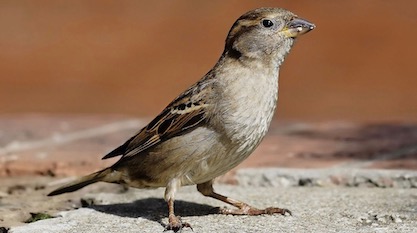 Intelligent Design
Intelligent Design
News for the Birds — Smart, Gymnastic, Flute-Playing, Surviving


Actually, make that news for people about birds. Some people mock supposedly intelligence-challenged folks as “birdbrains.” Others disdain faulty information by calling it “for the birds.” In truth, birds are beautiful, smart, and sophisticated. Some illustrations from recent research:
Smart Birds
For years, scientists have been amazed at the intelligence of New Caledonian crows. Some researchers have concluded they are smarter than chimpanzees. Three scientists, writing in Current Biology, asked, “How Do New Caledonian Crows Get Their Tool Designs?” Their research on “Corvid Technologies” yielded a surprise: crows make good students.
Recent research shows that New Caledonian crows can incorporate information from researcher-made objects into objects they subsequently manufacture. This ‘mental template matching’ is one of several possible — mutually compatible — mechanisms for the cultural transmission of tool designs among wild crows. [Emphasis added.]
If there is any “evolution” in this case, it is not Darwinian. The “cultural evolution” that the authors invoke involves the ability to observe, learn, and imitate, and thereby accumulate innovations in a culture. They say, “such cumulative cultural evolution was once believed to be a uniquely human phenomenon.”
Gymnastic Birds
Why don’t birds fall over when they jump? This question, investigated by the University of Manchester and reported on Phys.org, led to some useful findings that may help robot designers build agile robots that can get around in complex environments such as disaster sites.
We’ve all seen birds hop from branch to branch with astonishing ease, even though the branches have different thicknesses and angles. They make it look so easy. But before a bird becomes airborne, it has a problem: it has to lean forward, shifting its center of gravity off center.
The three scientists, publishing in Royal Society Open Science, found that birds combine a leap with a forward lean, such that they never have a catastrophic instability. To the researchers’ surprise, they found that the wings are not needed at takeoff, “the most energetically demanding phase of flight, where the highest accelerations are imposed on the body.” The wings only provide energy after leaving the branch. Moreover, the team learned that they could treat the jump and the lean as one continuous variable:
The researchers also found that, as well as pitching, birds have a ‘compliance’ in their joints which allows them to flex in a unique way during a jump. Without this compliance the birds would experience ‘stutter’ or ‘chatter’ which is a high frequency vibration between the feet at the ground.
Embedded videos show in slow motion how birds jump smoothly and effectively with finesse.
Flute-Playing Birds
The Field Museum in Chicago offers a story about how birds sing. “Birds’ voiceboxes are odd ducks,” the article says. “Nothing has a voicebox quite like a bird’s, but cats, mice, and crocs show some similarities.” No wonder birdsong often sounds like a flute; the voicebox, or syrinx, acts like one. The scientists had trouble fitting this exceptional trait into an evolutionary story:
Birds sing from the heart. While other four-limbed animals like mammals and reptiles make sounds with voiceboxes in their throats, birds’ chirps originate in a unique vocal organ called the syrinx, located in their chests. No other animals have a syrinx, and scientists aren’t sure how or when it evolved. In a new study in the Proceedings of the Natural Academy of Science, an interdisciplinary team of developmental biologists, evolutionary morphologists, and physiologists examined the windpipes of birds, crocodiles, salamanders, mice, and cats to learn more about how syrinxes evolved. Their findings seem to confirm: the syrinx is an evolutionary odd duck. But it might have arisen from a reinforcement at the bottom of the windpipe that we still see in many other animals.
“Birds have a unique organ in their airway to produce sounds — it’s like a flute,” says Chad Eliason, a postdoctoral researcher at Chicago’s Field Museum and co-first author of the study. “We don’t know where that organ came from, how and why it evolved. But in this study, when we zoomed out and looked at the windpipes of other animals, we found deep similarities that we didn’t expect.”
Surviving Birds
The common sparrow can adapt to lead exposure near mines, says Phys.org. Sparrows in Australia show genetic changes after fifty generations spent living near mining towns in Australia. Here’s a situation where Darwinism should help explain adaptation. Does it?
“Adaptation to pollutants is vital to the future health of ecosystems in areas affected by human activity like mining, but we currently have very limited understanding of how animals can evolve to mitigate the negative impacts,” said lead author Samuel Andrew.
Researchers found similar genetic changes in two separate populations of birds. They claim this demonstrates “parallel evolution even after this relatively short period of time.” The changes involve down-regulating how lead is absorbed into the body. Is it reasonable that two populations would independently hit on this adaptation by chance? If their genomes are pre-programmed to deal with environmental toxins, that’s intelligent design.
Photo source: An Australian house sparrow, via Phys.org/Wikipedia.
